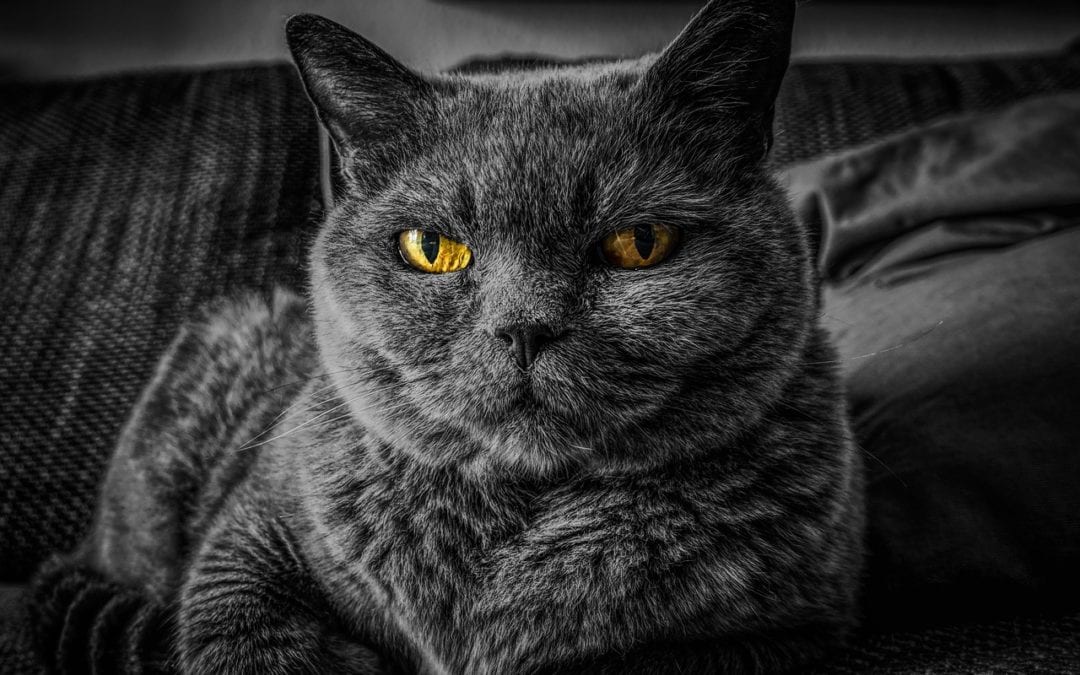Is My Cat a Bully?
In many ways, cats are portrayed as the small bullies of the animal kingdom. Is this a simple misrepresentation of their independent nature, or is your cat actually a bully? If so, how can you identify it and put a stop to it?
Aggression or territorial behaviors among cats is common. More than a quarter of cats brought into shelters are relinquished due to aggression. Most cats that pick on other cats (or dogs) are seen as aggressive, but bullying can be either aggressive or passive (done slyly). If bullying is happening, you want to take action to stop it.
Often there are explanations for bullying behavior. In fact, bullying may be a way for your cat to signal that something is wrong. Understanding what your cat truly needs may be one key to reducing aggression in your cat. Let’s explore!
Why Is My Cat Trying to Be Top Dog?
If your cat is trying to get your attention by being the household bully, he or she may be trying to tell you something. Here are a few of the reasons why a cat may display this type of aggression:
Territory – Cats are very territorial creatures. If changes occur in your household, such as a new pet or a change in residence, this can initiate territorial behaviors. This behavior may be your cat’s way of establishing position in the household and ensuring that their territorial needs are met.
Litter Box – Animals use urine and feces to mark territory, so sharing a litter box can result in additional stress to your pet and increased assertiveness on their part.
Food – Resource guarding can be triggered when food bowls come out.
Attention – Sometimes behavioral problems are a direct result of lack of attention or lack of environmental enrichment in a pet’s surroundings.
Sexual Frustration – Sexual frustration is often linked with aggression, especially between same-gender cats.
Dog vs Cat – Sometimes aggression directed toward a dog can be as much due to the dog’s behavior as to the cat’s actions. Your dog’s actions may be provoking your cat. If your dog wants to play but your cat doesn’t, your cat may get aggressive in telling the dog to back off. Or the dog may be encroaching on your cat’s litter box, toys, bed or other territory.
Intervention
Knowing what your cat needs will go a long way in making a happier home life. So, now that you know these possible reasons for your cat’s aggression, how do you best use them? Here are ideas to implement at home:
- Separate your pet from the rest of the household animals and slowly introduce them back together after a period of separation.
- Supervise your pets and allow them to mingle for short durations. Separate them when you notice stress or discomfort.
- Use separate bowls for food and water for each pet. You may need to feed each pet in separate areas to help reduce the need to protect their food.
- Make sure each cat has their own litter box, plus one extra.
- Keep litter boxes uncovered so that there’s less threat of one cat passively cornering another inside the litter box.
- When you have all your pets together with you, make sure to show them equal amounts of love and attention.
- Have your cat spayed or neutered. It’s one of your best options for preventing bullying toward any of the other pets in the house.
- Make sure your cat has their own toys and they they have adequate activities and enrichment. Your bullying cat may simply be bored and frustrated.
- If your cat is aggressive toward the dog, monitor their interactions. Try to see what triggers your cat’s bullying behavior and whether it is truly bullying or simply a territorial issue.
Playing vs. Fighting
All animals play and mock-fight, but identifying true aggression and bullying from simple play can be tricky. Here are ways to identify whether its play or aggression:
Growling or hissing – This one is a big indicator of aggression and should be positively redirected, even if it is play.
Body language – Puffy tails or flat ears can immediately indicate how your cat feels. Pawing with ears facing forward, body relaxed, is a good sign! Pawing while ears are back and your cat is leaning away from the other means a fight is brewing.
Afterwards – Check to see how your cats or cat and dog act when they’re finished playing. If they cuddle, groom each other, or otherwise seem fine together, it was probably simple play. If they avoid each other or continue to display anxious body posture, they were most likely responding to aggression or stress.
When Your Cat Is a Bully
Now that you recognize signs of cat bullying, how do you stop an altercation?
- Intervene as soon as you notice the problem developing.
- Avoid stressful or aggression-inducing situations (food bowls too close, lack of privacy, etc.).
- Put a bell on the aggressive cat’s collar to signal to the other cats.
- Use high value food, treats, and toys when the cats are together, as a way to create positive associations.
- Separate the aggressive cat and reintroduce him or her slowly using rewards, such as favorite treats.
- Do not use punishment toward your cat, including spray bottles, as this can create more aggression and fear.
If the issue continues or gets worse, there may be medications that can be useful, along with a behavioral assessment. Our veterinarians at Union Lake Pet Services can help you determine whether your cat is displaying aggression or has other behavioral issues to be addressed, and how to best handle them.
If you think your cat is a bully, please give us a call to discuss and to set up an appointment. Also, the Cornell Feline Health Centerprovides even more insight into feline aggression.

